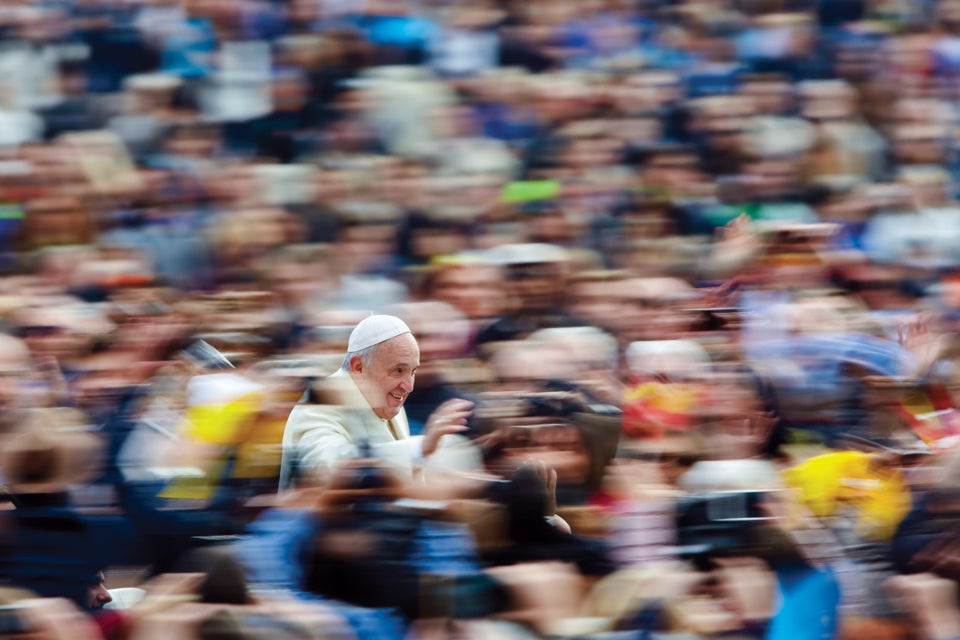
When the name "Jorge Bergoglio" was called out in March 2013 to announce the new pope, the wider world knew little about the Argentinian Jesuit bishop. Still rocked by the abrupt resignation of Pope Benedict XVI, the Catholic Church needed a leader who could take on the mounting challenges of sex abuse trials, economic disorganization and more. Pope Francis appears to be rising to the challenge.
A new book published by National Geographic and titled Pope Francis and the New Vatican explores Francis's papacy and the effect it has already had on the Catholic Church. The book combines original reporting from journalist Robert Draper and exclusive photography from National Geographic photographer Dave Yoder.
View an excerpt from Pope Francis and the New Vatican by Draper below:
Though to the outside world Pope Francis seemed to have exploded out of the skies like a meteor shower, he was a well-known and occasionally controversial religious figure back home. The son of a working-class accountant whose family had emigrated from northwestern Italy’s Piedmont region, Bergoglio had distinguished himself from the moment he entered the seminary in 1957 at the age of 20 (after briefly but famously working as a lab technician and as a bouncer at a club). In 1958 he chose the intellectually challenging and socially rigorous Society of Jesus as his path to the priesthood. He taught unruly boys, washed the feet of prisoners, and studied overseas. He became the rector of Colegio Maximo as well as a fixture in the blighted shantytowns throughout Buenos Aires. And he rose in the Jesuit hierarchy even while navigating the murky politics of an era that saw the Catholic Church enter into fraught relationships: first with Juan Perón—the thrice-elected president of Argentina who sought to dignify labor—and later the military dictatorship that ousted Perón.
He fell out of favor with his Jesuit superiors, then just as quickly, an admiring cardinal plucked him from exile and helped make him bishop in 1992. He rose to become archbishop in 1998 and cardinal in 2001. Shy in disposition, Bergoglio preferred the company of the poor over the affluent. His indulgences were few: literature, soccer, tango music, and gnocchi. Still, for all his simplicity, the Argentine was an urban animal, an acute social observer, and, in his quiet way, a natural leader. Though typically averse to publicity, Bergoglio would seize a moment when he sensed the need to do so.
His papacy was not mere coincidence. As the Roman author Massimo Franco would put it, “This pope is the son of the resignation”—referring to the sudden (and, for the past six hundred years, unprecedented) resignation from the papacy by Benedict, a bookish theologian with long experience in the Vatican but little as a crisis manager. His departure brought into relief the mounting sentiment that the Church was beset by peril—that the hoary and insular Eurocentric mind-set of the Holy See (the office of the Catholic Church in Rome) was rotting from within. Bergoglio’s assumption of the papacy reflected this crisis mentality, says Franco: “His election arose from a trauma.”
Sitting in the living room of his apartment at Santa Marta that morning in May, the pope acknowledged to his old friends the daunting challenges that awaited him: Financial disarray in the Vatican’s Institute for the Works of Religion (colloquially referred to as the Vatican Bank). Bureaucratic greed bedeviling the Roman Curia. Continuing disclosures of pedophilic priests who are insulated from justice by Vatican officials. Juxtaposed against the moral strictness of a highly ritualized religious order, the Church’s hypocrisies risked alienating an entire generation of Christians.
On these and other matters, Francis intended to move boldly. Though he had not asked to be pope, the moment the name Jorge Bergoglio had been called out in the conclave, he felt a tremendous sense of peace. And, he told his friends, “To this day, I still feel the same peace.”
Also on HuffPost:

